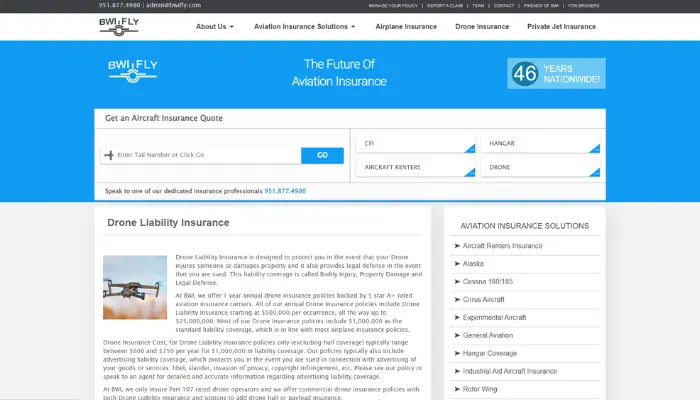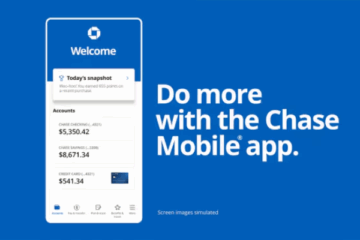How BWI Aviation Drone Insurance Protects Your Drone Investment
The growing popularity of drones, both for recreational and commercial use, highlights the need for adequate safety and protection. BWI Aviation Insurance is a renowned company in the aviation insurance market, offering specific coverage for drone operators.
Advertising
In this article, we’ll explore BWI Aviation Drone Insurance in detail, covering essential aspects for those who want to protect their investment and operate more confidently.
Liability Coverage
Advertising
Liability coverage is one of the most critical aspects of drone insurance, as it protects against third-party damages, including property damage and personal injury.
This coverage can be essential for both recreational and commercial drone operators, as any incident involving a drone can result in significant financial consequences.
Advertising
- Why It’s Important: Any incident, such as the drone damaging a vehicle, a house, or injuring someone, can lead to high costs in lawsuits and compensation.
- What It Covers: BWI Aviation offers liability coverage limits ranging from $500,000 up to $25,000,000. It’s crucial to choose an adequate amount based on the type and location of your operations.
Step-by-step to acquire liability coverage:
- Define the Type of Operation: Operations in public areas usually require higher coverage limits.
- Consider the Risks: Assess potential damages that your drone might cause in its operational environment.
- Choose the Coverage Limit: Based on your risk profile and needs, select an amount that guarantees adequate protection.
Physical Damage Coverage for the Drone

Beyond liability, BWI Aviation provides physical damage coverage for the drone itself, protecting your investment from unexpected incidents.
This type of policy is crucial, especially for commercial operators and those who rely on their drone equipment for professional work, as it ensures you’re covered in case of accidental damage.
- Why It’s Important: Even experienced operators are subject to crashes and collisions.
- What It Covers: Coverage includes damages to the drone itself and essential accessories, such as cameras and gimbals. It is especially recommended for professional drones, which tend to be more valuable.
Tip: Always check what is specifically covered. Not all damages are included, such as normal wear and tear or factory defects.
Operator Requirements
To qualify for BWI Aviation drone insurance, operators must meet certain requirements that verify their capability and commitment to safe flying practices.
These standards are especially important for commercial drone use, as these operators are typically exposed to greater risks and more complex flying environments.
Meeting these requirements not only ensures compliance with insurance policies but also contributes to safer, more responsible drone operations overall.
- FAA Part 107 Certification: For commercial operations, Federal Aviation Administration (FAA) regulations in the U.S. require pilots to hold a Part 107 license, ensuring that the operator has the necessary knowledge and skills.
- Good Operational Conduct: BWI requires operators to follow local regulations and operate drones responsibly. This helps reduce risks and facilitates coverage approval.
If you’re in Brazil, note that ANAC has its own requirements, such as drone registration and RETA insurance for commercial use.
Insurance Costs and Premiums
BWI Aviation Drone Insurance costs vary according to coverage level, type of operation, and the operator’s profile. To calculate the annual premium, the insurer considers several factors:
- Coverage Level: The higher the insured amount, the higher the cost.
- Operator Experience: Operators with certifications and safe operating histories tend to have lower premiums.
- Operation Location: High-risk environments, such as densely populated urban areas, may increase insurance costs.
- Drone Usage: Drones used for high-risk filming or industrial inspections may have higher costs due to exposure to risks.
If you want to save on insurance, a good tip is to pursue training and certification courses to operate the drone safely.
Claims Process
In the event of an accident, it’s important to know how to proceed to make a claim and receive coverage.
- Report the Incident Immediately: Contact BWI as soon as possible after the accident. Provide all relevant details, such as the date, time, and location.
- Document the Accident: Take photos and videos of the accident scene, if possible. This helps document the case and speeds up the review process.
- Provide Witnesses: If there are witnesses to the incident, include statements to verify the event.
- Submit the Necessary Documentation: The insurer may require additional documents, such as the drone registration, operating license, and technical details.
The claims process can be quick, but the operator’s promptness and accuracy of information are essential.
Commercial vs. Recreational Coverage
BWI Aviation Drone Insurance has different approaches for commercial and recreational operators, each with its own characteristics.
- Commercial Operations: Require broader coverage, mainly to protect the operator from risks associated with aerial filming, infrastructure inspections, and other high-risk activities. Commercial operators are also more susceptible to lawsuits, making liability coverage essential.
- Recreational Use: For enthusiasts, coverage can be more basic but still necessary. Accidental third-party damage is common, and liability coverage is recommended for those who fly in public areas or parks.
Tip: Evaluate your coverage needs based on the type of operation you perform most frequently. BWI offers specific options for each profile.
Policy Exclusions and Limitations
Not all risks are covered by insurance. Understanding policy exclusions helps the operator to better understand what to expect and avoids unpleasant surprises.
- Illegal Operations: Any operation outside FAA (or ANAC, in Brazil) regulations will not be covered.
- Negligent Use: Insurance does not cover situations where the operator was negligent or improperly operated the drone.
- Factory Defects: Manufacturing failures are not covered. In these cases, the manufacturer’s support should be contacted.
- Natural Wear and Tear: Components that wear down with use, such as propellers, batteries, and motors, are not covered for damage.
Summary: Before purchasing, review the policy’s exclusion terms to ensure it meets your expectations.
Conclusion
BWI Aviation Drone Insurance is an excellent solution for operators looking to protect themselves and operate safely. With comprehensive coverage, ranging from liability to physical damage protection, BWI provides peace of mind for those who use drones daily.
Purchasing adequate insurance is a responsible, preventative step. Evaluate your needs, choose the ideal coverage, and fly more confidently, knowing that you and your investment are protected.





